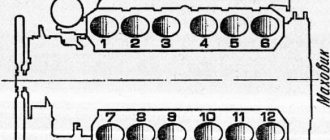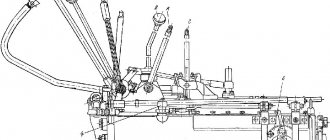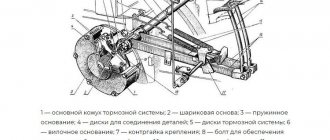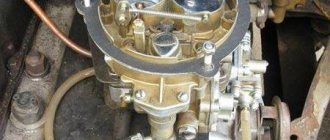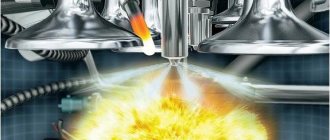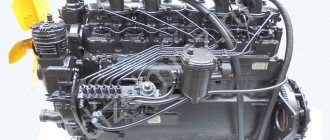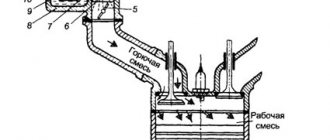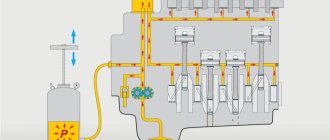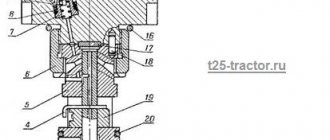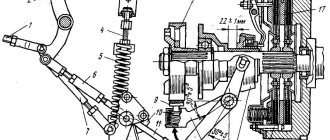YAZDA injectors
The wide range of injectors produced by YaZDA OJSC allows YaMZ, KamAZ, MMZ, TMZ engines to have high economic, power and environmental indicators, including those that meet Euro-3, Euro-2 standards.
The modern design of nozzles ensures stable performance and ease of maintenance.
Nozzles with installation diameters of 25, 24, 22.5 mm are serially produced. The plant's capabilities allow us to produce nozzles with an installation diameter of 17 and 21 mm for automobile, tractor and stationary diesel engines.
Currently, work is underway to create injectors that provide multi-phase and multi-stage fuel injection, having both mechanical and electronic control.
Specifications
| Ecology parameter | Nozzle model | Installation diameter, mm | Diameter of the needle, mm | Number of sprays resp. | Needle lift pressure, bar | Spray model | Applicability on engines |
| Euro-3 | 51-21 | 21 | 4,5 | 4 | 300…312 | DLLA 160P1780 Bosch | YaMZ Euro-3 engines (with individual cylinder heads) |
| 267-21 | 24 | 4,5 | 4 | 300…312 | DLLA 160P1780 Bosch | YaMZ Euro-3 engines (with common cylinder heads) | |
| 274-20 *274-50 | 25 | 4,5 | 6 | 270…280 | 335.1112110-30 *DLLA 148PV3 Bosch | KamAZ Euro-3 engines | |
| 455-73 | 22,5 | 4,5 | 5 | 250…270 | 335.1112110-121 | MMZ Euro-3 engines | |
| Euro 2 | 51-01 | 21 | 4,5 | 6 | 270…282 | 335.1112110-60 | YaMZ Euro-2 engines (with individual cylinder heads) |
| 51-02 | 21 | 4,5 | 6 | 270…282 | 335.1112110-60 | ||
| 267-02 | 24 | 4,5 | 5 | 270…278 | 335.1112110-50 | YaMZ Euro-2 engines (with common cylinder heads) | |
| 267-10 | 24 | 4,5 | 5 | 270…278 | 335.1112110-70 | ||
| 273-20, 273-21 | 25 | 6 | 5 | 250…262 | 273.1112110-20 | KamAZ Euro-2 engines | |
| 455-50 | 22,5 | 4,5 | 5 | 250…270 | 335.1112110-120 | MMZ Euro-2 engines | |
| Euro-1, Euro-0 | 26-03 | 24 | 6 | 4 | 210…218 | 26.1112110-01 | YaMZ engines with dimensions 130×140 mm |
| 26-10 | 24 | 6 | 4 | 210…218 | 26.1112110-01 | ||
| 26-11 | 24 | 6 | 4 | 210…218 | 26.1112110-01 | ||
| 261-03 | 24 | 6 | 4 | 210…218 | 261.1112110-01 | ||
| 261-10 | 24 | 6 | 4 | 210…218 | 261.1112110-01 | ||
| 261-11 | 24 | 6 | 4 | 210…218 | 261.1112110-01 | ||
| 262-03 | 24 | 6 | 4 | 210…218 | 26.1112110-01 | ||
| 263-03 | 24 | 6 | 4 | 210…218 | 261.1112110-01 | ||
| 181-11 | 25 | 6 | 5 | 220…228 | 181.1112110-01 | Engines YaMZ, TMZ with dimensions 140×140 mm | |
| 181-20 | 25 | 6 | 5 | 220…228 | 181.1112110-30 | ||
| 181-30 | 25 | 6 | 5 | 220…228 | 181.1112110-20 | VgMZ engines | |
| 182 | 25 | 6 | 5 | 220…228 | 182.1112110 | Engines YaMZ, TMZ | |
| 182-10 | 25 | 6 | 5 | 220…228 | 182.1112110-10 | ||
| 33-03 (33-02) | 25 | 6 | 4 | 220…250 | 33.1112110-12 | KamAZ engines | |
| 33-11 (33-10) | 25 | 6 | 4 | 220…250 | 33.1112110-12 | ||
| 271-02 (271-01) | 25 | 6 | 4 | 220…250 | 271.1112110-01 | ||
| 272-02 (272) | 25 | 6 | 4 | 220…250 | 272.1112110 | ||
| 273-31 | 25 | 6 | 4 | 220…250 | 273.1112110-30 |
Nozzle purpose
Diesel fuel systems
|
The nozzle serves to supply fuel into the combustion chamber under high pressure in a finely atomized form and ensures a clear cut-off of the fuel supply at the end of injection. On diesel engines, several types of injectors are used: open or closed, with a sprayer having one hole (nozzle) or several. Closed nozzles can be pinned or pinless. Diesel engines of the YaMZ, KamAZ, and ZIL brands use closed pinless injectors. The nozzle is called closed, since the nozzles in the atomizer are closed by a needle and communicate with the combustion chamber only at the moment of fuel injection. To release fuel, the atomizer has four nozzles with a diameter of 0.34 mm.
Additional Information
Injector maintenance
When servicing, adjust each nozzle to an injection start pressure of 26.5+0.8 MPa (270+8 kgf/cm2). It is recommended to make the adjustment on a special stand that meets the requirements of GOST 10579-88. The injection start pressure is adjusted with a screw when the injector cap is removed and the lock nut is unscrewed. When screwing in the screw, the pressure increases, when turning it out, it decreases.
To check the tightness of the atomizer along the locking cone of the needle and the absence of leaks in the sealing areas of the high pressure lines, it is necessary to create a fuel pressure in the nozzle 1–1.5 MPa (10–15 kgf/cm2) below the injection start pressure. In this case, there should be no leakage of fuel from the spray holes for 15 seconds; It is allowed to moisten the nozzle of the sprayer without the fuel coming off in the form of a drop. Check the tightness of the high pressure line seals by maintaining pressure for 2 minutes; At the upper end of the nozzle nut (when installing the nozzle at an angle of 15° to the horizontal surface), no drop of fuel should form that comes off.
The mobility of the needle can be checked by pumping fuel through a nozzle adjusted to a given injection start pressure on a pressure testing stand, at an injection frequency of 30–40 per minute. It is allowed to check the mobility of the needle simultaneously with checking the quality of spraying.
Spray quality check
The quality of atomization must be checked on a pressure testing stand by pumping fuel through a nozzle adjusted to a given injection start pressure at a frequency of 60-80 injections per minute. The atomization quality is considered satisfactory if the fuel is injected into the atmosphere in a mist-like state and is evenly distributed both over all jets and across the cross section of each jet. The beginning and end of the injection must be clear. After injection is completed, the nozzle of the sprayer can be moistened without forming a drop. Fuel injection from the new injector is accompanied by a characteristic sharp sound. The absence of a sharp sound from used injectors does not mean a decrease in the quality of their work.
Leak test
Checking the seals, connections and outer surfaces of the low-pressure cavity of the injectors is carried out by pressure testing with air at a pressure of 0.45±0.05 MPa (4.5±0.5 kgf/cm2). Air flow for 10 seconds is not allowed. Check the tightness of the “nozzle-nozzle nut” connections by pressure testing with air at a pressure of 0.5±0.1 MPa (5±1 kgf/cm2) for 10 seconds with air supplied from the side of the nozzle nozzle on a special stand.
Passing air through the thread of the nozzle nut when immersing the nozzle in diesel fuel is not allowed.
Actions in case of blockage
If one or more spray holes of the atomizer are clogged or coked, disassemble the nozzle, clean the nozzle parts and rinse thoroughly in filtered diesel fuel. If there is a leak at the locking cone, the sprayer assembly must be replaced. Replacing parts in the sprayer is not allowed. Disassemble the nozzle in the following sequence:
- unscrew the injector cap
- loosen the locknut and turn out the adjusting screw 3–4 turns to unload the spring
- unscrew the sprayer nut
- remove the atomizer, protecting the needle from falling out
Remove carbon deposits from the sprayer body with a metal brush or sandpaper with a grain size no coarser than M40. Clean the spray holes with steel wire with a diameter of 0.3 mm. It is not allowed to use hard materials or sandpaper to clean the internal cavities of the sprayer body and needle surfaces.
Before assembling, thoroughly rinse the sprayer and needle in filtered diesel fuel. The needle should move easily: extended from the sprayer body by one third of the length of the guide, when the sprayer is tilted at an angle of 45° from the vertical, the needle should smoothly, without delay, completely lower under the influence of its own weight.
Reassemble the injector in the reverse order of disassembly. When tightening the nut, turn the sprayer against the direction of screwing the nut until it stops against the fixing pins and, holding it in this position, screw the nut on by hand, after which the nut is finally tightened. The tightening torque of the sprayer nut is 60–70 Nm (6–7 kgf m), the nozzle fitting is 80–100 Nm (8–10 kgf m). After assembly, adjust the nozzle to the injection start pressure and check the quality of fuel atomization and the smooth operation of the nozzle.
YaMZ-238 diesel fuel supply system
The fuel equipment of the YaMZ-238 diesel engine of Maz, Kraz, Ural cars, and the K-700 tractor is of a divided type.
The fuel supply system for the YaMZ-238 internal combustion engine consists of: a high-pressure fuel pump with an all-mode speed controller and a built-in corrector for adjusting the fuel supply, a fuel priming pump, injectors, coarse and fine fuel filters, low and high pressure fuel lines.
Rice. 1 — Diagram of the YaMZ-238 engine power supply system
A – suction line; B – low pressure; C – high pressure; D – draining excess fuel into the tank; 1 – fine fuel filter; 2 – nozzle; 3 – fuel coarse filter; 4 – fuel tank; 5 – fuel priming pump; 6 – high pressure fuel pump
From the tank, through a coarse filter, fuel is sucked in by the YaMZ-238 fuel priming pump and supplied to the fine filter and then to the high-pressure fuel pump.
The fuel injection pump for the internal combustion engine YaMZ-238 of Maz, Kraz, Ural cars, and the K700 tractor, in accordance with the operating order of the cylinders, supplies fuel through high-pressure fuel lines to the nozzles, which spray it into the engine cylinders.
Through the bypass valve in the YaMZ-238 fuel pump and the jet in the fine filter, excess fuel, and along with it the air that has entered the system, is discharged through the fuel line into the fuel tank.
The fuel that has leaked into the cavity of the injector spring is discharged through the drain pipeline into the tank.
The pump is located in the camber of the YaMZ-238 diesel engine between the rows of cylinders and has a gear drive.
The high-pressure fuel pump of the YaMZ-238 diesel engine is eight-section, according to the number of engine cylinders.
Fuel pump for YaMZ-238 engine
The fuel priming pump of the YaMZ-238 engine is a piston type designed to supply fuel from the fuel tank through coarse and fine filters to the high pressure fuel pump.
The productivity of the YaMZ-238 fuel priming pump is 3-4 times higher than the productivity of the high-pressure fuel pump, which guarantees the stability of the fuel supply process from cycle to cycle.
The design of the YaMZ-238 internal combustion engine pump for Maz, Kraz, Ural cars, and the K-700 tractor is shown in Fig. 9.
Rice. 2 — Fuel pump YaMZ-238
1 – body; 2 – piston; 3 – piston spring; 4 – sealing ring; 5, 16 – plugs; 6 – rod bushing; 7 – pusher rod; 8 – pusher; 9 – pusher retaining ring; 10 – cracker pushers; 11 – roller axis; 12 – roller; 13 – discharge valve; 14 – valve spring; 15 – sealing washers; 17 – cylinder body; 18 – cylinder; 19 – piston; 20 – rod; 21 – handle; 22 – protective cap; 23, 24, 25 – sealing rings; 26 – suction valve; 27 – valve seat
The fuel priming pump of the YaMZ-238 diesel engine is mounted with three bolts on the left side on the high-pressure fuel pump housing and is driven by the camshaft eccentric through a roller tappet.
In the housing 1 (Fig. 2) of the pump there is a piston 2, a piston spring 3, resting on one side against the piston, and on the other against a plug 5, suction 26 and discharge 13 valves, pressed to the seats 27 by springs 14.
The cavity of the YaMZ-238 diesel pump housing, in which the piston moves, is connected by channels to the cavities above the suction and below the discharge valves.
The piston is driven by pusher 8 through rod 7.
The pusher roller rotates on a floating axis 11, locked by two nuts 10 against longitudinal movement.
At the same time, the pusher blocks, moving in the grooves of the housing 1, protect the pusher from turning.
Rod 7 moves in guide sleeve 6, which is screwed into the pump body using special glue.
The rod and bushing are a precision pair.
To pump fuel when the YaMZ-238 engine is not running, the pump is equipped with a manual fuel pump.
This pump is used to remove air from the fuel system before starting the engine, as well as to fill the entire line with fuel during maintenance of fuel equipment.
YaMZ-238 engine injectors
All parts of the injectors of the YaMZ-238 diesel engine of Maz, Kraz, Ural cars, and the K-700 tractor are assembled in housing 7 (Fig. 10).
Rice. 3 — Injector for diesel engines YaMZ-238
1 – spray body; 2 – spray needle; 3 – spacer; 4 – rod; 5 – sprayer nut; 6 – spring; 7 – body; 8 – fitting with filter; 9 – cap; 10 – nut; 11 – washer; 12 – adjusting screw; 13 – spring plate; 14 – pin; 15 – slot filter
A spacer 3 and a spray nozzle (mod. 335.1112110-50 and 204.1112110-50.01, respectively) are attached to the lower end of the injector body of the YaMZ-238 internal combustion engine using nut 5.
The relative position of the nozzle body, spacer and sprayer is determined by pins pressed into the spacer.
Inside the body 1 of the sprayer there is a shut-off needle 2.
The body and needle form a precision pair.
The sprayer has five spray holes.
The tightening force of spring 6 (injection start pressure) is adjusted by screw 12 screwed into the nozzle body.
The screw is fixed with nut 10.
For the YaMZ-238 injector model 204-50.01, the tightening force of spring 6 is adjusted by adjusting washers installed in the nozzle body.
Fuel is supplied to the injector through fitting 8 screwed into the injector body.
The slot filter rod 15 is pressed into the fitting.
The fuel that has leaked through the gap between the needle and the nozzle body is removed from the nozzle through the spring cavity and holes in the adjusting screw and cap 9.
The injector of YaMZ-238 diesel engines of Maz, Kraz, Ural cars, and K700 tractors is installed in the cylinder head cup.
A copper corrugated washer is placed under the end of the nozzle nut to seal against gas breakthrough.
Diesel fuel coarse filter YaMZ-238
Rice. 4 — Coarse filter for diesel fuel YaMZ-238
1 – axis; 2 – cap; 3 – filter elements; 4 – flange; 5 – purified fuel outlet tip; 6 – fuel supply tip; 7 – filter cover; 8 – gasket; 9 – air release plug; 10 – drain plug
The coarse fuel filter for the YaMZ-238 engine consists of a cover 7, a cap 2 and filter elements 3.
The cap and cover are connected with four bolts through flange 4.
The seal between them is ensured by a rubber gasket 8.
There is a drain plug 10 on the cap.
Fuel enters the YaMZ-238 diesel filter of Maz, Kraz, Ural cars, and the K-700 tractor through tip 6 and the cavity in axis 1.
Fuel purification is carried out in the settling cells of the filter elements 3; particles of mechanical impurities and drops of water flow along the inclined walls of the disk cells into the collecting cavity of the cap 2.
During operation, periodic drainage of sludge, washing of the cap and filter elements are provided.
Fine filter for diesel fuel YaMZ-238
Rice. 5 — Fine filter for diesel fuel YaMZ-238
1 – drain plug; 2 – drain plug gasket; 3 – spring; 4 – filter element; 5 – cap; 6 – rod; 7 – cap gasket; 8 – cover; 9 – plug; 10 – jet gasket; 11.15 – jet valve; 12 – bolt; 13 – gasket; 14 – filter element gasket
The YaMZ-238 fine fuel filter (Fig. 12) consists of a cap 5 with a rod 6 welded to it, a cover 8 and a filter element 4.
A drain plug 1 with a gasket 2 is screwed into the rod from below.
The seal between the cap and the lid is ensured by a paronite gasket 7.
The cap and the lid are connected by a bolt 12, under the head of which a sealing washer 13 is placed.
Replaceable filter element 4 is made of special paper or synthetic fabric.
Spring 3 presses the element to the cover. The element is sealed at the end surfaces with gaskets 14.
A nozzle valve 15 is screwed into the lid, which is sealed with a gasket 10.
Through the jet valve, part of the fuel is drained along with the air that has entered the low pressure system.
The jet valve is adjusted to an opening pressure of 20 - 40 kPa (0.2 - 0.4 kgf/cm2).
At low pressure in the system, which can be observed during startup, in the engine of Maz, Kraz, Ural cars, and the K700 tractor, the valve closes the channel and the fuel does not drain, the fuel supply to the ECU is improved.
During operation, periodic drainage of sludge, replacement of the filter element, and washing of the cap are provided.
Fuel lines of YaMZ-238 diesel engines
Rice. 6 — Connection diagram of high-pressure fuel lines between injection pump sections and cylinder injectors of the YaMZ-238 engine
To supply fuel to the pump and injectors of the YaMZ-238 diesel engine and remove its excess, the engine has a system of low and high pressure fuel lines.
Low pressure fuel lines of the YaMZ-238 internal combustion engine are connected with hollow bolts or union nuts through tips attached to the ends of the fuel lines.
The contact surfaces are sealed with copper washers 1.5 mm thick.
YaMZ engines can be equipped with low-pressure polyamide fuel lines.
The contact surfaces are sealed with aluminum washers 1.5 mm thick.
The high-pressure fuel lines of the YaMZ-238 diesel engine of Maz, Kraz, Ural cars, and the K-700 tractor (Fig. 13) have the same length for all engine cylinders.
The ends of the fuel lines are set in the shape of a cone and pressed with union nuts to the fittings of the high pressure fuel pump and injectors.
To avoid damage to the YaMZ-238 fuel lines from vibration, they must be secured using special brackets.
To seal the common heads, high-pressure fuel lines are fitted with flanges.
All necessary parts can be purchased in our catalog
Diesel injectors:
a — YaMZ-236; b - KamAZ-740; 1 — spray needle; 2 - copper washer; 3 - annular cavity; 4— sprayer; 5— union nut; 6—pin; 7—ball; 8 — body; 9 — rod; 10 — spring plate; 11 - spring; 12 — adjusting screw, 13 — spring cup; 14 - lock nut; 15 — cap; 16 - gasket; 17 — bushing; 18 - mesh filter; 19 — fitting seal; 20 - fitting; 21 and 23 — channels; 22 — annular groove; 24 - brass glass; 25 — cylinder head; 26 — spacer; 27 - sealing ring; 28 — adjusting washers; 29 — support washer.
